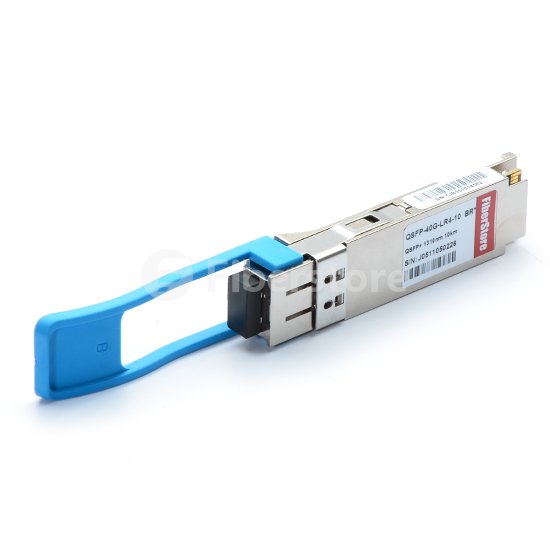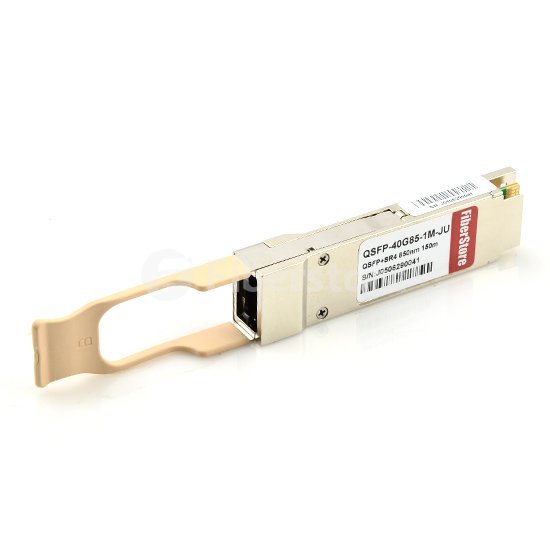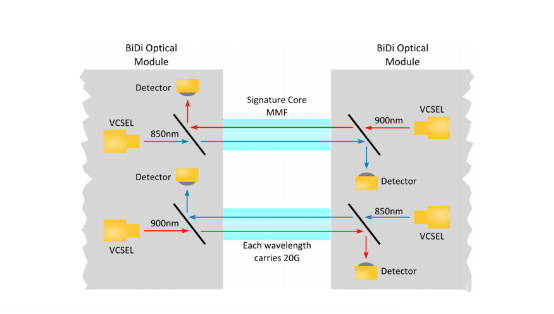As the need for increased network bandwidth to meet the global IP traffic demand is growing rapidly, there is an urgent need for upgrading to 40G Ethernet links in data centers. And the IEEE 802.3ba committee has already ratified the 40G Ethernet standard and along with the general specification, defining a number of fiber optic interfaces. These standard interfaces attempted to satisfy a number of different objectives including support for multi-mode fiber (MMF) and single mode fiber (SMF) compatibility. Therefore, there appears various transceiver solutions for migrating to 40G Ethernet network. Among these solutions, there are three popular ones: 40Gbase LR4 QSFP+ transceiver, 40Gbase SR4 QSFP+ transceiver and 40G QSFP BiDi transceiver. This article will give a comprehensive comparison on them.
40G LR4 QSFP+ transceivers are hot-swappable Ethernet optical transceivers that support high-speed serial links over single mode optical fiber. With built-in optical multiplexing and de-multiplexing, this kind of transceiver has four channels of 10G multiplexed/de-multiplexed inside the module to transmit and receive an aggregate 40G signal over a single pair (2 strands) of fiber. Used with LC connectors and single mode fiber, 40G LR4 QSFP+ transceivers’ transmission distance can cover around 10km.
As 40G LR4 QSFP+ transceivers can be used together with LC connectors, they may use existing duplex fiber infrastructure for 40G migration. That’s to say, 40G LR4 QSFP+ transceivers can offer a very cost effective connectivity solution and unique value proposition for data centers to migrate from 10G to 40G Ethernet network with minimal disruption with existing fiber optical infrastructure. The main disadvantage of 40G LR4 QSFP+ transceivers is that the optical link may not be as simple as that of 40G LR4 QSFP+ transceivers. The following is a picture of Finisar FTL4C1QE1C compatible 40GBASE-LR4 QSFP+ transceiver.

40G SR4 QSFP+ transceivers are parallel fiber optical module with four independent optical transmit and receive channels. Each of these channels is capable of a 10G operation for an aggregate data rate of 40G. These transceivers use MTP/MPO connectors and require multi-mode OM3 or OM4 cables. They can support with a link length up to 100 meters on OM3 cable and 150 meters on OM4 cable.
40G SR4 QSFP+ transceivers use fundamentally different connectivity formats, requiring fiber cabling infrastructure to be redesigned and replaced. Thus, they cannot reuse aggregation fiber infrastructure built for 10-Gbps connectivity. The following is a picture of Cisco QSFP-40G-SR4 compatible 40GBASE-SR4 QSFP+ transceiver.

40G QSFP BiDi transceivers are the lasted products used in 40G transmission. They are transceivers that transmit full-duplex 40-Gbps traffic over one dual-fiber LC-connector OM3 or OM4 MMF cable. 40G QSFP BiDi transceivers have two 20Gbps channels, each transmitted and received simultaneously over two wavelengths on a single MMF strand. The result is an aggregated duplex 40Gbps link over a MMF duplex LC-terminated fiber cable. The connection can reach 100 meters on OM3 MMF or 150 meters on OM4 MMF, which is the same as 40Gbps SR4. The following figure shows the technology concept of the Cisco QSFP BiDi transceiver.

To accommodate an ever increasing spectrum of 40G Ethernet applications, Fiberstore offers various 40GBASE QSFP+ transceiver types, suitable for different media and distance reaches. All of our QSFP+ transceivers are tested in-house prior to shipping to ensure that they will arrive in perfect physical and working condition. We offer our customers with high-performance and cost-effective products to fulfill their requirements, contributing this way to the customer’s success and satisfaction.